Table of contents
Do you know what the benefits of pilates are?
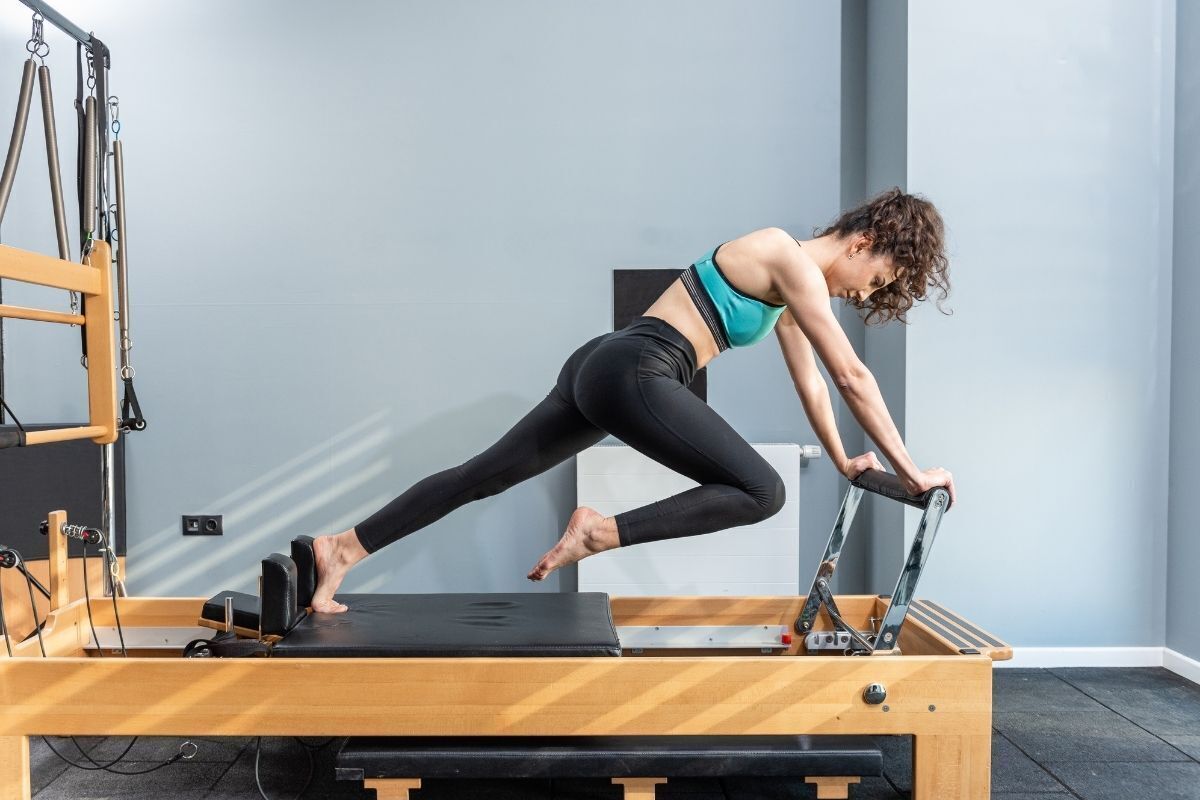
Pilates is a low-impact workout that is very effective at strengthening, stretching, and toning muscles through controlled, repetitive movements. The advantages of incorporating this method into your exercise routine are numerous, ranging from increased strength to improved posture.
One of the greatest highlights of the practice is that it is suitable for everyone, regardless of fitness level, age, height, or weight, because the workouts can be easily adjusted according to the needs of each practitioner.
This significantly improves quality of life, and has a positive effect on depression and pain in general. Read on to find out more benefits!
Understanding more about pilates
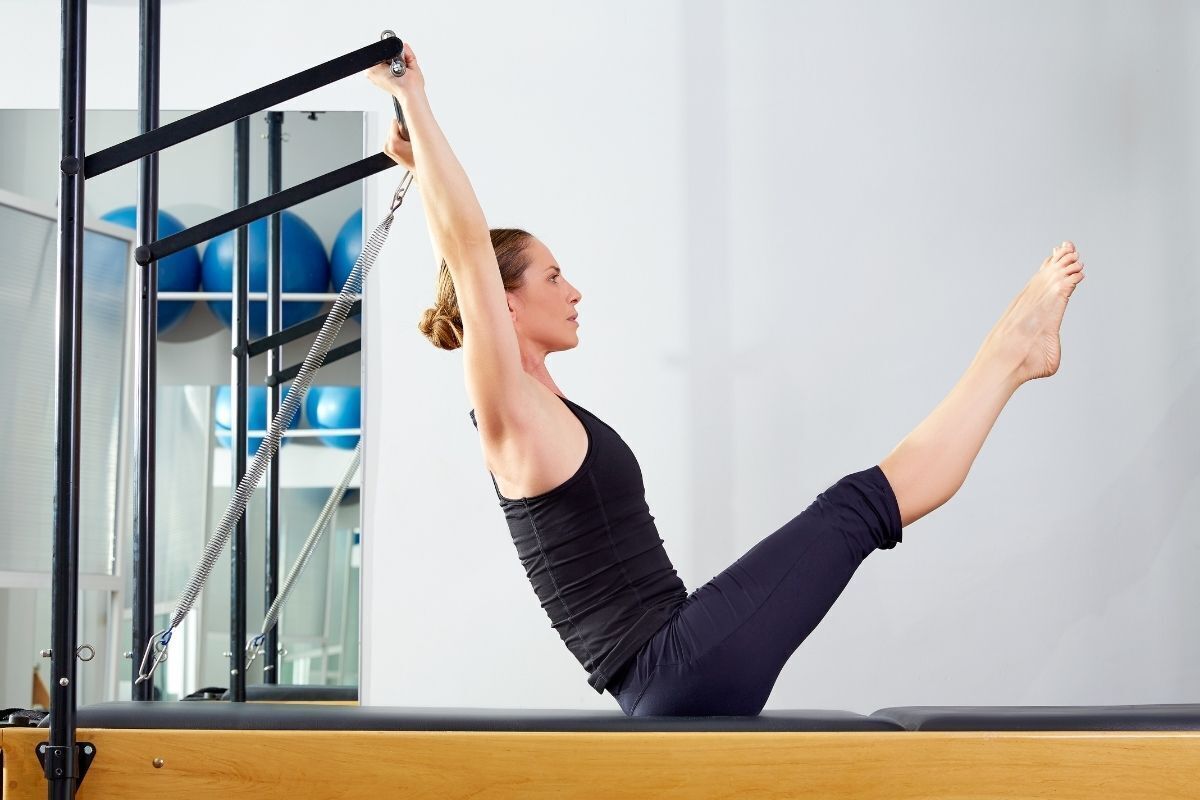
As a practice that aims at the well-being not only of the body, but also of the mind, Pilates is capable of improving daily activities as a whole, leaving your life light. Learn more about this method below!
Origin and history
Created in the early 20th century by Joseph Pilates, the exercises that bear his inventor's name coordinate movement and breathing. They work the deepest muscles of the body, as well as those most important for balance and posture.
Originally from Germany, Joseph Pilates suffered from asthma, rickets, and rheumatic fever, so he was determined to improve his physical condition to alleviate the symptoms of his ailments. Without any help from anyone, he began to study Chinese anatomy, physics, biology, and ancient physiology. He also practiced physical activities such as yoga, boxing, swimming, and weight training.
All this led Joseph to develop a unique method, full of exercises capable of helping everyone, including those who suffer from some pathology.
What is it used for?
Pilates is a low-impact exercise that strengthens the body through muscle balance and fine-tuning of neuromuscular patterns. It can align your entire physical structure, including the joints.
This seemingly complex and challenging method can become very simple and highly beneficial when given the right guidance, because the ideal kind of strength is acquired through this activity: it balances strength, mobility, and flexibility.
In this way, Pilates helps you move and breathe more freely and, most importantly, without pain.
How does it work?
Made up of various types of movements, the pilates method involves exercises that are generally slow, cadenced, refined, and very well elaborated. moreover, the practice is based on six principles: centering, concentration, control, precision, breathing, and fluidity.
Pilates training can be accomplished in several ways. One is through large, specific machines, such as the reformer and the cadillac. They can be scary at first, but they are perfect for a successful and relaxing practice.
It can also be done on mats, with the help of some props, such as rings, weights, and balls, or just using your body weight.
For whom is it indicated?
Many people believe that Pilates is a physical activity designed only for women. However, this method is for everyone, without restrictions. It can be practiced by individuals of any gender, age, race, height, weight, ability, or fitness level.
This is because the training repertoire includes more than 600 types of exercises and variations, so you can be sure there is something for everyone. Pilates can be done even by those who are sedentary, pregnant women, people in rehabilitation, and athletes.
Mental and emotional benefits of pilates
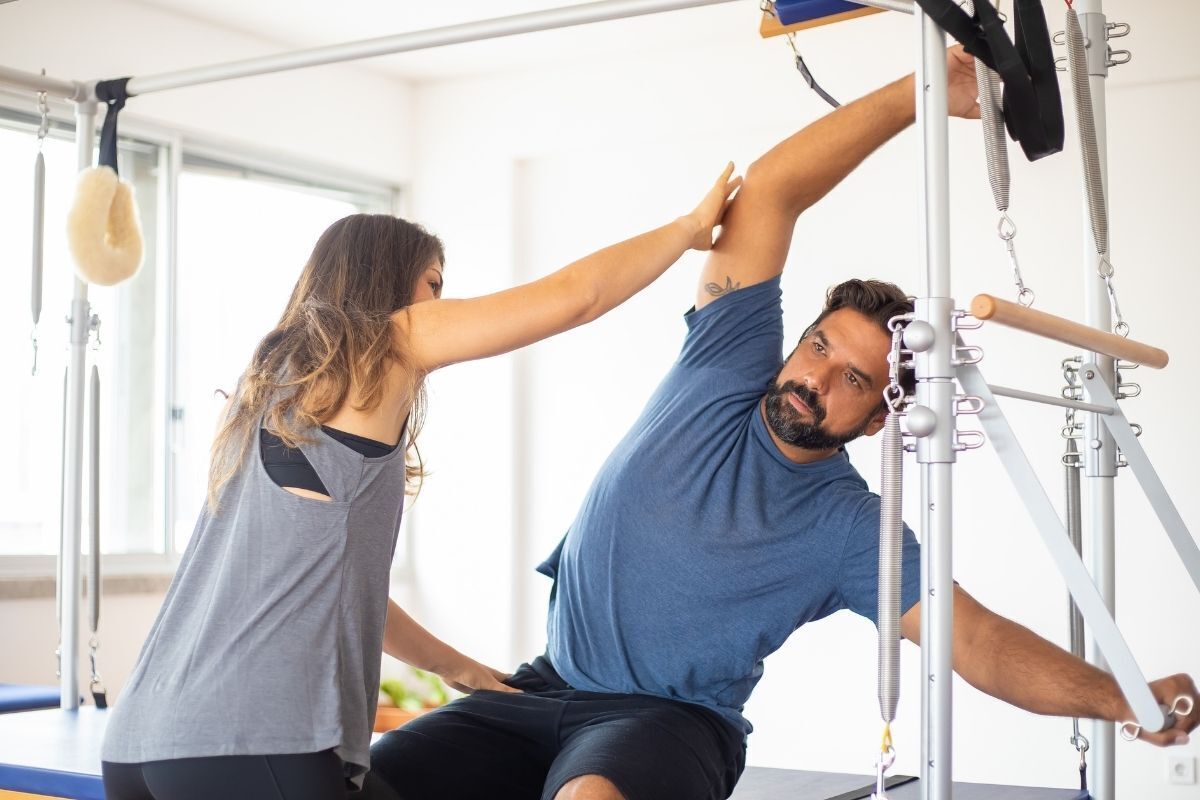
Pilates is a method that goes far beyond the body, as it can bring several benefits to the mind. In this way, it is ideal for creating a special connection between the physical, mental and emotional. Learn about some advantages of its practice below!
Improves concentration
During Pilates classes, it is essential that the practitioner maintain a high level of concentration. Since the exercises must be done in a correct manner, it is very important that the student focus on each movement and breathing.
This focus exercise can be easily incorporated into your routine, optimizing your performance in various daily activities. Pilates can help you a lot, both in personal and professional situations.
Helps with relaxation
With the rush and stress of everyday life, it is very common for bad thoughts to shake our mental health. In this case, Pilates is highly recommended, as the set of exercises is able to relax us.
This is because the soft and firm movements of the practice help calm the mind. In this way, the physical activity optimizes the functioning of the nervous system. Furthermore, stretching strengthens the muscles and improves blood circulation. In this way, feel-good hormones are released and tensions are dissipated, which provides calm and balance.
Relieves anxiety and stress
A great tool against anxiety and stress, Pilates is capable of regulating and reducing the agitation of the nervous system, all thanks to focusing and learning how to breathe correctly.
Pilates is able to decrease the production of this substance, reducing stress in the long term.
Furthermore, by controlling the breath, the mind is tranquil and at peace, so the person can live in a much lighter, more fluid and positive way, enjoying every moment and being free of negative feelings.
Improves cognitive function
In one study, several markers were evaluated, such as the development of new neurons, blood flow, increased neurotransmitters, and the longevity of neurons responsible for learning, memory, and rapid thinking.
In addition, a 12-week pilates program helped improve verbal fluency, coordination, strength, and flexibility in a group of women aged 60 and older.
May help improve memory
The Pilates method proves to be an extremely beneficial practice for the brain, since it helps to improve memory. Research has shown that this type of exercise, which requires a higher level of concentration, stimulates neurogenesis, that is, the creation of new brain cells.
The results of the method are most visible in the hippocampus, the brain region responsible for memory. This happens because Pilates increases blood flow, providing greater oxygenation in the organ.
Encourages playfulness
The joy promoted by pilates is a highlight, because it is a physical activity practice that doesn't even look like a gym workout.
There is no other training in which you can happily roll or hang while exercising, and it brings countless benefits to your body and soul. It is worth mentioning that the most advantageous activities are those in which you get to enjoy a lot, really enjoying what you are doing. This is because then you will keep exercising more and more.
Promotes well-being
Recent studies have proven that Pilates improves the mood of its practitioners. The researchers found that individuals experienced a reduction in anxiety, fatigue, and depressive symptoms, and decreased the frequency of negative thoughts.
This method is considered by many to be a stress-buster and a mood booster. This is because the training stimulates the production of endorphins in the brain, promoting a general feeling of well-being.
Moreover, focusing on the breathing and the exercises themselves can be particularly relaxing. One can hear reports of people who have participated in a challenging workout and yet have come out jumping for joy, happy that they got the most out of it.
Physical benefits of pilates
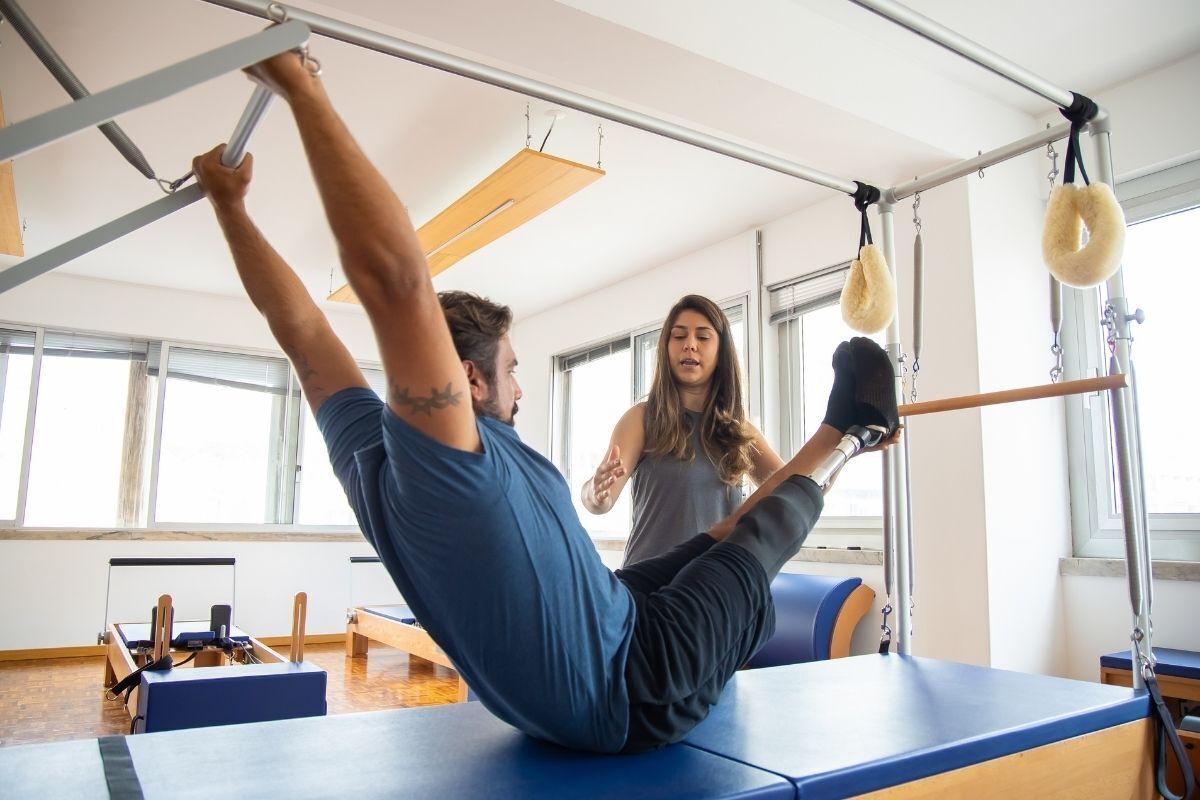
Pilates has numerous health benefits, one of which is to alleviate the symptoms of dysmenorrhea, a condition in which menstrual periods are extremely painful.
Increases mood and energy
By focusing on breathing, Pilates improves cardiorespiratory capacity, thereby stimulating the feel-good hormones, oxygen flow, and blood circulation.
Moreover, due to its low-impact nature, the practice rarely makes you tired. On the contrary, pilates gives you a huge boost of energy, since it is an activity that involves mind and body, increasing body awareness.
With this optimized perception of your own body, you will be able to know your limits better, learning what gives you the most energy and what drains your energy.
Helps improve breathing
Proper breathing is an essential point in the practice of Pilates, because the way you breathe is very important and has a great impact on your quality of life.
When we take a Pilates class, we learn to improve our breathing, becoming calmer and more focused, and can slow down a bit. With an adequate breathing rhythm, the brain is oxygenated more efficiently, helping in all the activities of everyday life.
To get an idea, by breathing intentionally and in the right way, stress is dissipated, leaving in its place a wonderful sense of well-being.
Improves sleep quality
According to studies, Pilates helps the individual to have a better quality of sleep, especially when it comes to people under 40.
With the release of endorphins caused by training, the feeling of well-being is almost immediate, which reduces anxiety and stress at bedtime.
Moreover, it is through its principles that the workouts are adapted, having the overload gradually increased to the ideal level, with few repetitions, and leading to a great night's sleep, very relaxing and invigorating.
Helps in weight loss
Pilates can help in the weight loss process, since it works with muscle toning, with emphasis on alignment and posture improvement. For many, it is considered a method that changes the body from the inside out, giving a taller, leaner appearance.
However, it is worth remembering that exercise alone is not the most effective way to lose weight. It is necessary to adopt a healthier lifestyle as a whole, with a balanced eating routine, for example.
However, workouts can help to reduce anxiety and stress, factors that can lead to overeating, with high intakes of sugar, fat, salt, and ultra-processed foods in general.
Improves flexibility
Able to improve flexibility, Pilates is one of the best methods to bring optimal levels of passive stretching to the muscle. By the way, with a good combination of flexibility and strength, your mobility will be excellent.
The pilates session includes training with smooth transitions, as well as precise, slow and controlled movements. Instead of stretching after a strengthening exercise, most exercises are a combination of the two, which improves strength, flexibility and mobility.
Helps correct posture problems
Pilates focuses on the alignment of the body as a whole, including the range of movement of the joints and the balance of the muscles. In this way, the technique is able to correct posture problems, bringing a great sense of body awareness.
Improving posture includes the process of strengthening muscles. When balance is found, headaches, shoulder and back pain often disappear.
Bad posture can also lead to problems with sitting and standing, so Pilates helps you perform simple activities that involve coordination, such as walking, cooking, and even hanging clothes on a clothes line much more easily.
Increases bone density
A more sedentary lifestyle, with several hours of sitting and very little movement, is detrimental to our health and especially to our bone density.
It is worth remembering that optimal bone density prevents osteoporosis and osteoarthritis, conditions that can affect people of any age. Contrary to what many people think, bone fragility is not exclusive to the elderly.
Therefore, the recommendation is to take Pilates classes, since several studies have shown that the practice is effective in increasing bone density, relieving pain, and improving overall quality of life.
Relieves joint pain
Pilates is a very common practice among people who suffer from joint and back pain, as the workouts are usually very effective in combating pain from various ailments, such as scoliosis, osteoarthritis, and lower back problems.
This is because the method is very focused on flexibility, mobility, balance and posture alignment, which helps a lot to alleviate pain. Stabilizing the spine can be one of the goals of Pilates. In addition, the training is also effective in combating pain caused by tension and stress, because the exercises use breathing optimization techniques, helping you torelax.
Further information about pilates
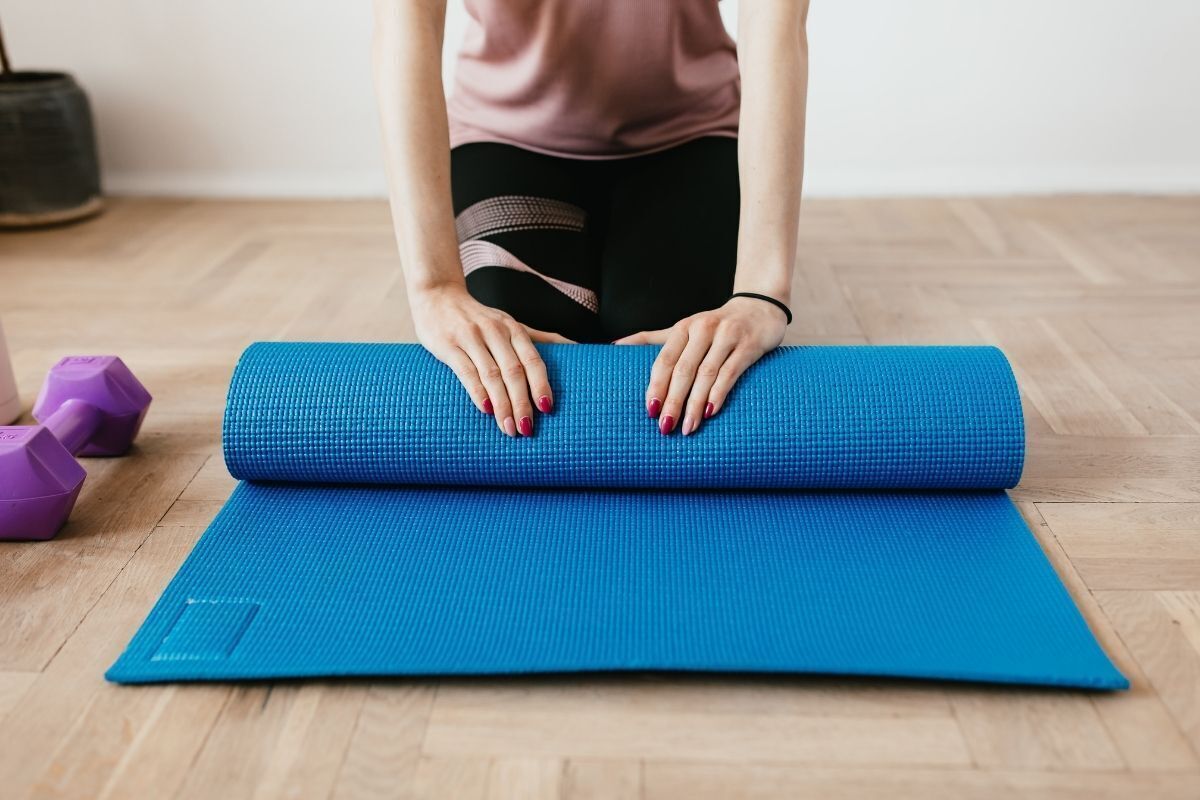
Despite not being an exhaustive activity, Pilates can strengthen the body. This characteristic makes the method sought after by the most different audiences, ranging from older individuals to professional athletes. Learn more below!
Tips for a good pilates session
To have a good pilates session, you need to understand that there are many types of exercises. In addition, classes can vary in intensity, format, and equipment used.
At first glance, the devices are intimidating, but they help you figure out how you are moving your body in space. The equipment is useful for finding the ideal alignment when performing more challenging movements.
However, it would be a good idea for beginners to try a virtual class before going to a studio. This is because the exercises can be done in the comfort of your own home, not requiring sophisticated equipment and being cheaper. This way you will have a better notion of how everything works.
Cautions and contraindications
As Pilates is a low-impact training, it has no contraindications, and can be practiced by anyone. However, it is worth pointing out that some care should be taken before a session, especially if you suffer from a chronic illness.
Another point to keep in mind is the place, since pilates does not go well with noisy environments, because concentration and performance can be greatly affected.
Frequency and execution
The frequency of Pilates varies, and it can be done more than once a week, but this can vary according to the background of each practitioner. Since the method uses different stimuli on the muscles, you will not feel fatigued even if you practice it every day.
The ideal frequency is 3 times a week. This way, your body has time to rest and still maintain a good exercise routine. However, if you are a beginner and were sedentary, it is recommended to do it only once a week, increasing according to the evolution of your physical conditioning.
Price and where to do it
Pilates classes are available in studios, gyms, and community centers. Prices may vary a lot according to your location, but the average price of an individual session in the city of São Paulo is R$ 330,00.
However, you can opt for a group class, which is usually cheaper. The average price in the city of São Paulo is R$ 250,00 (with sessions once a week). You can also do pilates at home. There are countless videos on the internet and specific applications of the method. This way, just a mat and comfortable clothes are enough to start the practice.
Enjoy the benefits of pilates!
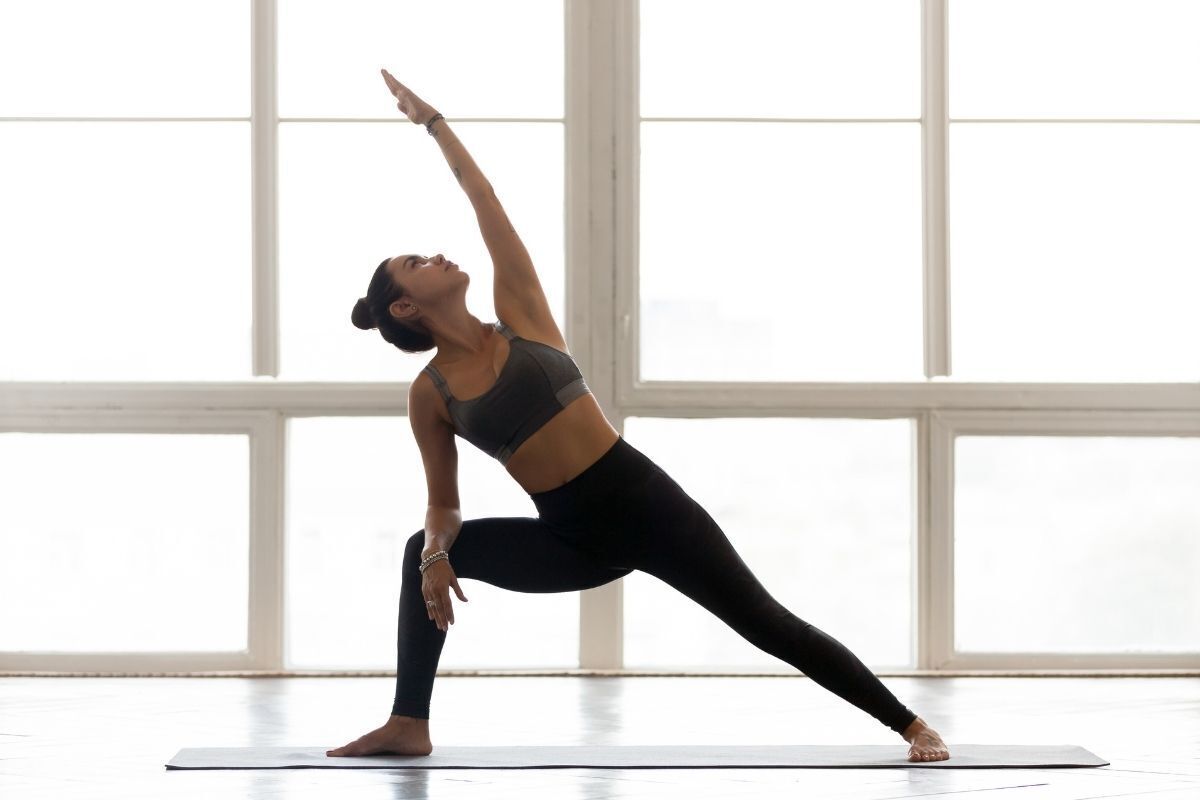
Including Pilates in your exercise routine will help you a lot, because the practice improves and optimizes the functioning of your body as a whole: physically and mentally. Whether you're looking to gain muscle mass, increase bone density, or just want to feel better, Pilates is the ideal method to boost your quality of life.
As this training develops dynamic strength, it helps the individual to support and stabilize the joints, promoting good mobility. In this way, it reduces the risk of injuries. So, the tip is to incorporate Pilates in your routine today. Surely, you won't regret it!

